Rose Basics for May – 10 Tips for Success
Rose Basics for May – 10 Tips for Success
If the blue Hydrangea is Cape Cod’s signature shrub, the rose is a close runner up. And because there are now so many landscape rose bushes available, It’s never been easier to have these beautiful flowers in your yard and garden. Yes, you can have beauty with much less bother!
Landscape roses are those that have been selected for repeat flowering and ease of care. While other varieties might routinely get defoliated by blackspot fungus, these varieties are highly resistant. Although they will still show some signs of blackspot after a wet, cool spring, the fungus doesn’t disfigure the entire plant.
How do I prepare the soil for roses?
1. When planting new roses, cover a wide area (3 to 4 feet in diameter) with a light application of Rose-tone fertilizer, followed by a 3 inch layer of compost or composted manure. Some of this will get mixed in with your native soil when the plant is put in the ground, and the rest will enrich the area from the top down. After your rose is planted, cover the area with an inch of bark mulch to suppress weeds and hold moisture in the ground.
Which rose should I plant?
2. Match the type of rose to the area where you are planting. For example, the shrubs in the Knockout series typically grow to 5 feet tall and 6 feet wide, so site them where they can get large. Most of the Oso Easy rose are a bit shorter, growing to about 4 feet tall, and the Drift and Flower Carpet roses tend to top out at around 3 feet. These are generalizations, of course, in that individual plants in each series may be shorter or taller.
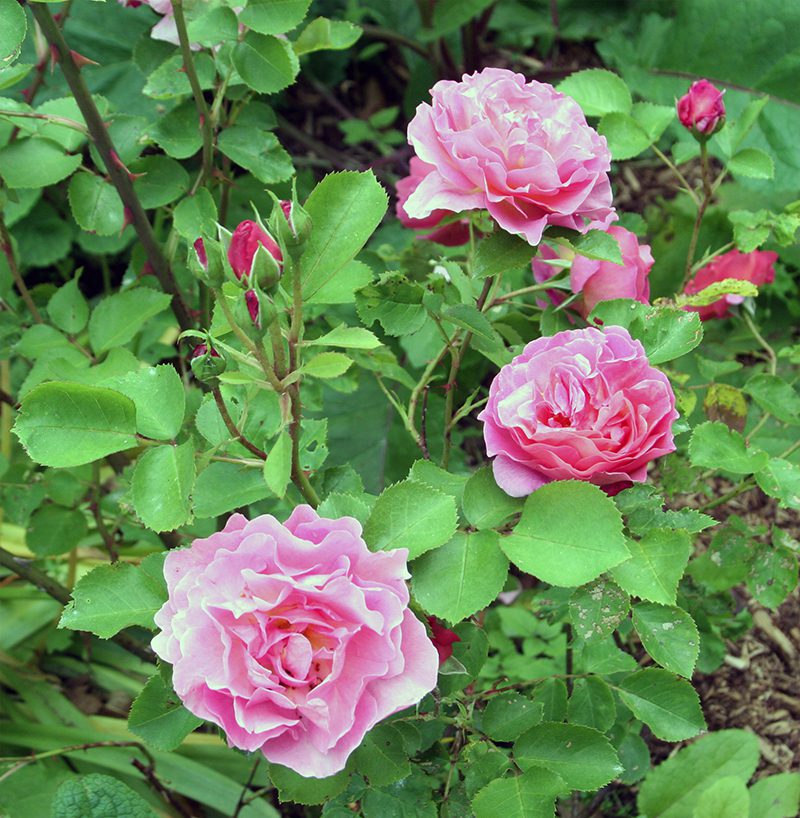
When can I move a rose that’s too large?
3. If your rose bush has outgrown its location, the first week in May is still a good time to move these plants in Cape Cod gardens. But if you can’t get to it by mid-May, you might want to wait until early fall or next spring.
How do I prune my shrub roses?
4. It’s still fine to prune roses, and you begin by removing any canes/stems that are dead. Wear protective gloves and long sleeves…rose thorns are hard to avoid. After taking the dead parts away, look for stems that are growing into the center of the plant, and cut those out. Finally, cut from the top down, shaping the plant. When possible, cut above a red bud or new growth that is facing out, away from the center. This will create plants with a pleasing shape and will help prevent stems from crossing and rubbing each other.
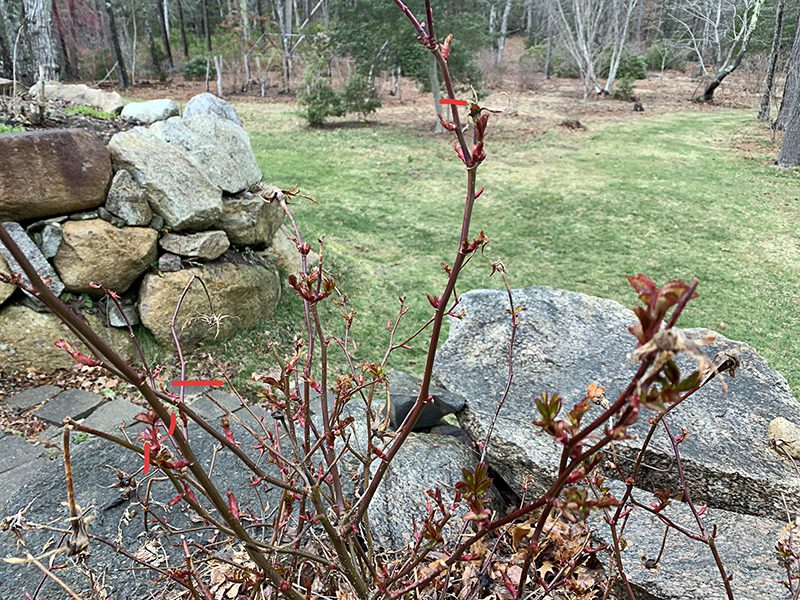
What fertilizer should I use for roses?
5. If you haven’t fertilized existing roses yet, scatter Rose-tone around the area, including at least a foot beyond the drip-line (outer edges of the shrub). You don’t have to dig the Rose-tone in, but if you can spread it before any mulch or compost goes on the ground, that’s to your advantage. If the area already has a fresh layer of mulch, just scatter the fertilizer on top. Put Rose-tone around your plants at least twice – spring and early summer.
What do I do about spots on my rose leaves?
6. If you have a rose that gets black spot and is defoliated every year, begin spraying it with an organic fungicide now. It’s easier to suppress black spot if you begin using the fungicide of your choice before the plant shows signs of infection. Come into the store to see the range of organic fungicides that are available. Click here for a link to a rose fact sheet about black spot from the University of Massachusetts. Note that the list of disease-resistant plants on this handout is a bit dated…there are many more varieties available today.
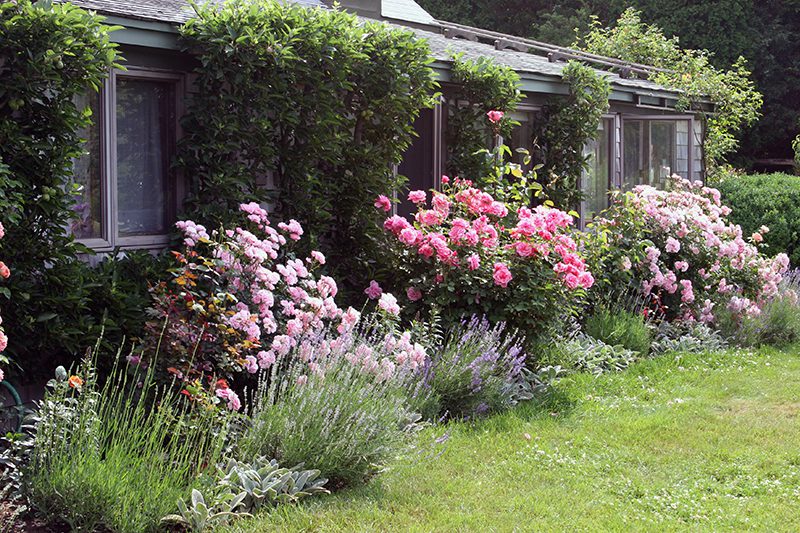
How should I water my rose bushes?
7. If you can water roses with a drip system or soaker hoses, do so. Like other plants, roses do best when watered deeply but less often. Work with your system to see how long it takes to soak the soil around your plants down 10 to 12 inches, and then run your irrigation that long every five to seven days.
What do I need to do with my climbing roses?
8. Tie up the canes of climbing roses now, after you’ve pruned out deadwood. Most climbing roses benefit from taking out one of the biggest, oldest canes every year, cutting it down to about a foot tall. Other canes can be trimmed at different levels in order to stimulate new growth in all areas. If you never remove older canes, and only trim on the top of the plant, you’ll end up with all the new growth and flowers up high, and bare stems down below.
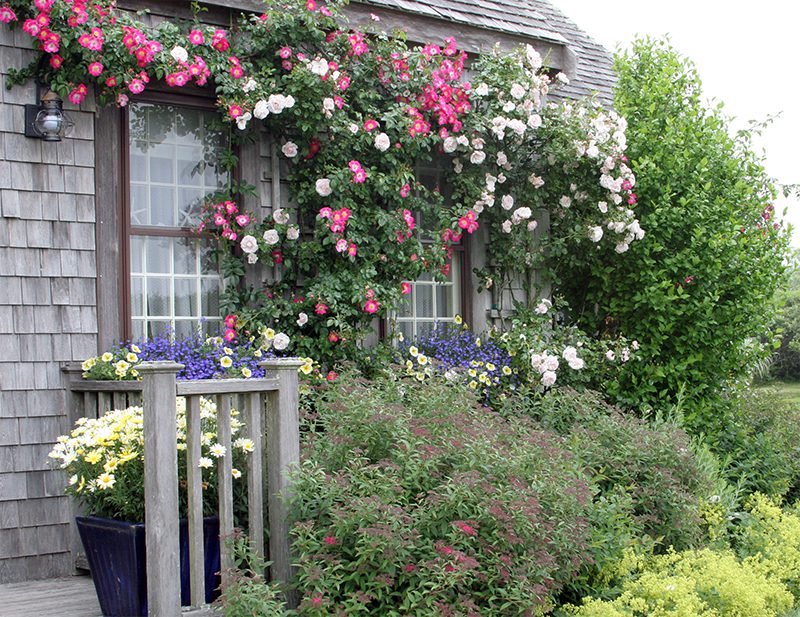
How can I get more flowers on my rose shrubs?
9. Remember that roses flower on new growth. You stimulate new growth by selective pruning, and amending the soil regularly with compost/manure and an organic fertilizer such as Rose-tone. Be sure that your plants are still in full sun…if the surrounding trees and shrubs have gotten larger, and your roses are now in more shade, they won’t flower as much.
What are the best plants to grow around roses?
10. If you want to underplant your roses with annuals or perennials, choose plants that will compliment the roses you have. Low growing perennials such as the cranesbill geraniums, lavender, lady’s mantle, and cat mint are favorites. Annuals that work with roses include Scaevola, Snow Princess Lobularia, and New Guinea Impatiens.
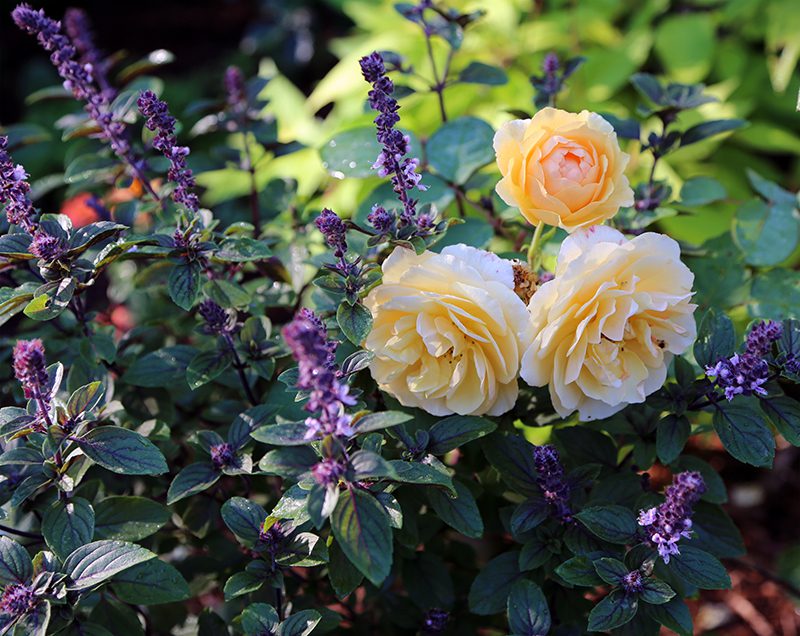
Subscribe To Our Newsletter
Sign up for our weekly email about sales and events.
